Manouria emys is the largest tortoise in Indomalaya and the fourth largest in the world. In general, the carapace is flattened on top, but broad, low and slightly wider posteriorly. With the exception of older animals, clear growth annuli surrounding the central areolae are apparent in vertebral and costal scutes. Scutes appear raised excluding very young animals where they exhibit a clear concavity. These turtles have a pronounced lack of derived morphological features (Crumly, 1982; Crumly, 1984). The primitive characteristics include mental glands, similar to batagurids (Winokur & Legler, 1975), arrangement of the carpal bones (Auffenberg, 1966) and early stages of tortoise-like shells evident in interior gular and epiplastral excavation (Highfield, 1990). Its primitive nature is also evident in its mesic habitat preference (Auffenberg, 1971; Pritchard, 1979). These tortoises also exhibit the very unusual nesting behavior of building and defending a raised nest mound.
The distinction between the sexes is not dramatic (Fig. 1) and there is often little difference even in size (Obst, 1988). Males may have longer thicker tails, a more posterior vent and a bulge on the anterior fifth vertebral scute (Morgan and Schaffer, 2001). Old males and some females may have a slightly concave plastron with little size dimorphism. Vocalization, primarily related to mating, occurs in both sexes. Males vocalize during courtship, mounting and copulation. Females limit calls to early stages of mating.
Manouria emys is divided into 2 subspecies: M. e. phayrei (Burmese black mountain tortoise) and M. e. emys (Burmese brown mountain tortoise). The key difference between the two subspecies is found in the pectoral scutes. In M. e. phayrei the pectoral scutes normally meet at or near the midline (Wirot 1979; Ernst & Barbour 1989; Cox et al., 1998), while they are widely separated in M. e. emys.
Manouria emys phayrei, the northern subspecies, ranges from central and northern Thailand , Myanmar , Assam , and Bangladesh to India
Manouria e. emys has a more southerly range in southern Thailand , Malaysia , Sumatra, Borneo and some of the Indonesian Islands Australia , China , Cambodia , Lao PDR and Vietnam British Museum Saigon ). Manouria e. emys is smaller (50 cm), has smaller clutches (30), and generally has a lighter yellowish brown flattened carapace. Sometimes the seams may be darker.
Figure 2. A range map showing the distribution of Manouria e. phayrei, Manouria e. emys, and the possible intergrades.
Hatchlings of both subspecies appear similar, differing primarily in color (Fig. 3 a&b) and pectoral scute arrangement (Fig. 3 c&d).










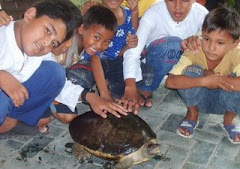

















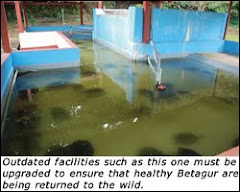.jpg)



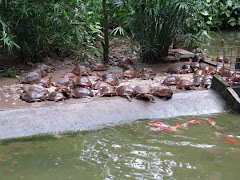

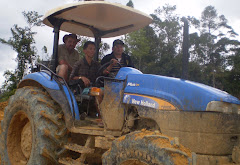
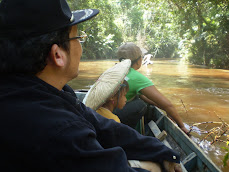
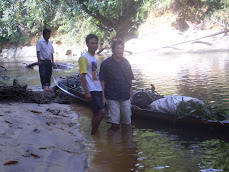













Tidak ada komentar:
Posting Komentar